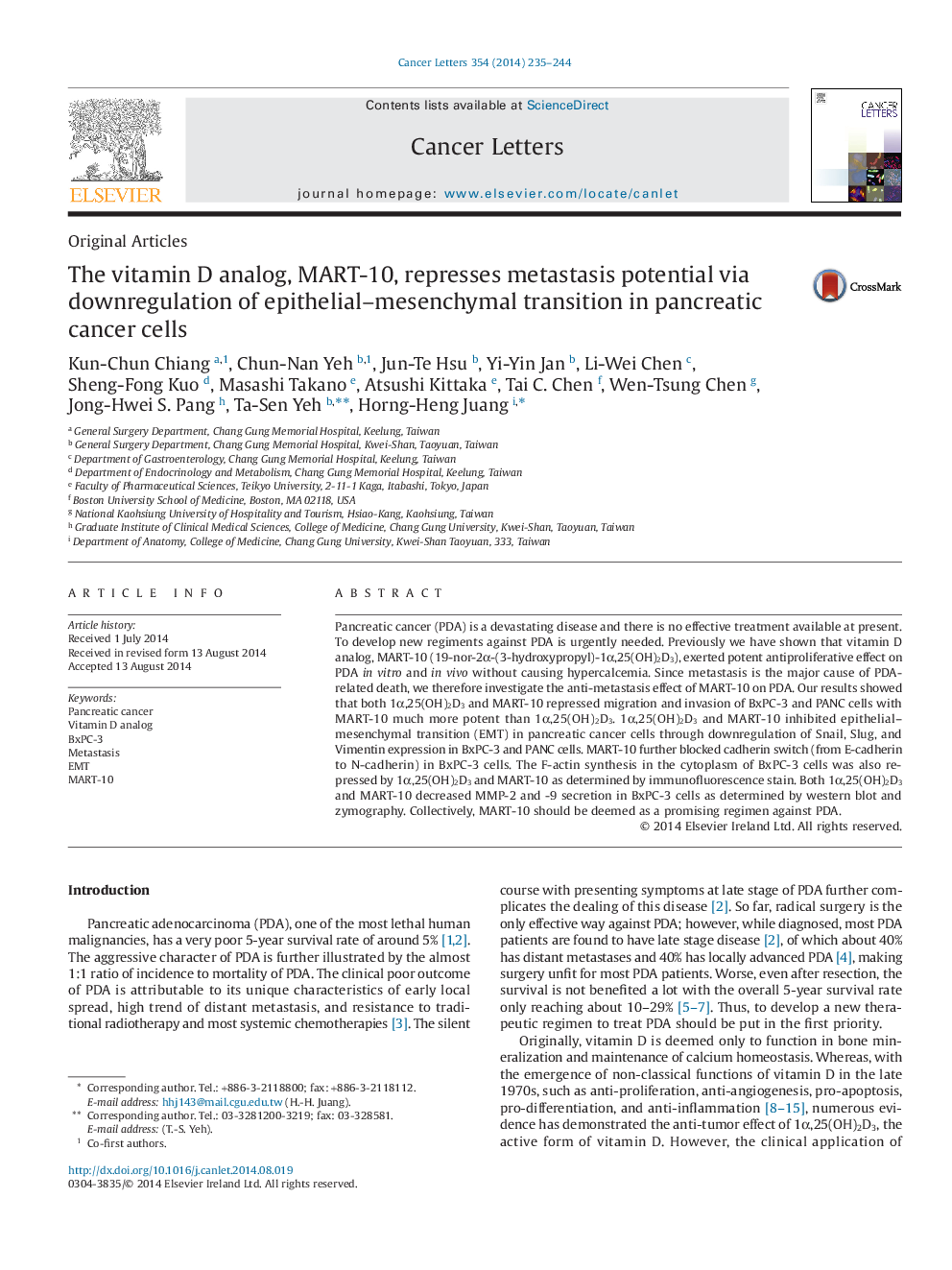| Article ID | Journal | Published Year | Pages | File Type |
|---|---|---|---|---|
| 2112582 | Cancer Letters | 2014 | 10 Pages |
•Recent evidence has indicated that the active form of vitamin D, calcitriol, has anticancer properties in addition to its well-known role as a modulator of bone and calcium metabolism. However, calcitriol can cause hypercalcemic side effect at a dose sufficient to inhibit cancer cell growth in clinical trials. Thus, more potent analogs which are either less calcemic or noncalcemic are highly desirable.•This article describes the antimetastatic activities of MART-10 in the pancreatic cancer cells. MART-10 is a noncalcemic 19-nor, C-2 modified calcitriol analog synthesized by Dr. Kittaka of Teikyo University. The design of this compound was based on the x-ray crystallographic structure of ligand-bound vitamin D receptor complex, that shows enhanced ligand–receptor binding. Previously, we have shown that MART-10 is a potent drug to inhibit pancreatic cancer growth in vitro and in vivo without inducing side effects. In this study, we investigated the effects of MART-10 on pancreatic cancer cell invasion and migration and found MART-10 did have potent effect to inhibit pancreatic cancer metastatic potential, which warranted further clinical studies.
Pancreatic cancer (PDA) is a devastating disease and there is no effective treatment available at present. To develop new regiments against PDA is urgently needed. Previously we have shown that vitamin D analog, MART-10 (19-nor-2α-(3-hydroxypropyl)-1α,25(OH)2D3), exerted potent antiproliferative effect on PDA in vitro and in vivo without causing hypercalcemia. Since metastasis is the major cause of PDA-related death, we therefore investigate the anti-metastasis effect of MART-10 on PDA. Our results showed that both 1α,25(OH)2D3 and MART-10 repressed migration and invasion of BxPC-3 and PANC cells with MART-10 much more potent than 1α,25(OH)2D3. 1α,25(OH)2D3 and MART-10 inhibited epithelial–mesenchymal transition (EMT) in pancreatic cancer cells through downregulation of Snail, Slug, and Vimentin expression in BxPC-3 and PANC cells. MART-10 further blocked cadherin switch (from E-cadherin to N-cadherin) in BxPC-3 cells. The F-actin synthesis in the cytoplasm of BxPC-3 cells was also repressed by 1α,25(OH)2D3 and MART-10 as determined by immunofluorescence stain. Both 1α,25(OH)2D3 and MART-10 decreased MMP-2 and -9 secretion in BxPC-3 cells as determined by western blot and zymography. Collectively, MART-10 should be deemed as a promising regimen against PDA.
